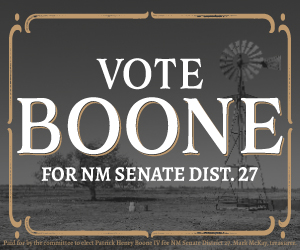Ten weeks. 78 days. More than 2 months.
That’s how long President-Elect Joe Biden has waited to be inaugurated into office.
Since the first presidency in 1789, there have been 59 Inaugurations. It is mandated in the United States Constitution that Inauguration Day, the formal transition of presidential power, happens every 4 years on January the 20th. That’s not always been the case however and the history is quite interesting.
George Washington’s inauguration was actually held on April 30, 1789. He’s quoted at the time saying, “I walk on untrodden ground.” Inauguration Day began with the sounds of ceremonial artillery and church bells ringing across New York City, our nation’s first capital. At noon Washington made his way through large crowds to Federal Hall where both houses of Congress were assembled. On the second-floor balcony facing the street he was administered the oath of office by Robert R. Livingston, the Chancellor of New York, and officially became the first president of the United States.
It wasn’t until 1787 that the U.S. Constitution was signed into law, and when George Washington became our first president 2 years after, the guidelines for inaugurations were basically non-existent in the new Constitution. 4 years later, when George Washington was to be inaugurated again, the date was moved back to March 4, 1793. At that time, March 4th was established as the official Inauguration Day, but it wasn’t until over a century later that an amendment changed that date to the one we know now.
The reasoning for the March 4th inaugurations that happened for many years was completely arbitrary. March 4th was officially the date when Congress held its first meeting, and so that date became one of governmental importance. The original Inauguration on April 30th was arbitrary as well, because it frankly just took people that long to get to New York from wherever they were located. Travel was clearly much different in the late 1700s than it is today. Travel required cart, wagon, horse, etc.

(Public Domain)
On March 4, 1921, President Warren G. Harding became the first president to ride to and from his inauguration in an automobile.
It wasn’t until 1932 that the 20th amendment to the United States Constitution, amidst a worldwide depression, implemented the January 20th inauguration date and the oath that the President-elect recites.
In 1933, Franklin D. Roosevelt was taking office, and people realized it was foolish, and even dangerous, to wait until March 4th to inaugurate him into office. The amendment also moved up the date for the first Congressional meeting. Prior to 1932, the first meeting of the newly elected Congress couldn’t meet until 13 months after the election. That means the 1933 Congress wouldn’t have met until December of that year. The 20th amendment was quickly implemented and we still abide by it nearly 90 years later.

Constitutional guidelines for inaugurations are still sparse, offering only the date and the words of the oath. All else is driven by tradition. After the oath is administered the president gives an address, usually one stressing national unity to attempt bringing the country together after an undoubtedly bitter election period.

In 1801, Thomas Jefferson was the first to be sworn in as president in Washington, D.C., the location chosen for the permanent capital. After his second inauguration in 1805 Jefferson rode on horseback from the Capitol to the President’s House amid music and a spontaneous gathering of mechanics from the nearby Navy Yard – a procession that grew into today’s inaugural parade.
Inaugural events have become more elaborate and entertaining as years have passed.
Not all presidents have followed the traditional script, however. Here are some unusual inauguration events in our nation’s history:
Following his March 4, 1829 inauguration, President Andrew Jackson held a rowdy house party that nearly destroyed the White House.
President Jackson invited the crowd back to the White House for an “open house.” The gathering grew to around 20,000 people, and as alcohol flowed, the event spiraled out of control. Furniture was broken, drinks and food were spilled, and it took nearly a week to clean and scrub the White House.
At the 1935 inauguration of President Dwight D. Eisenhower, a California Cowboy named Monty Montana lassoed the President-elect as a humorous moment.
Ulysses S. Grant’s second inauguration in 1873 occurred on Washington D.C.’s coldest recorded day in March: it was 4 degrees in the morning, and rose only to 16 degrees by noon, with winds of 40 mph. At the inaugural ball, which was held in a temporary building, there was a gruesome outcome: dozens of canaries, which had been brought to sing for the attendees, froze to death in their cages.

(CORBIS/CORBIS VIA GETTY IMAGESGETTY IMAGES)
On March 4, 1841, William Henry Harrison was inaugurated as the nation’s ninth president. It was a cold day, but he chose not to wear a hat, gloves, or overcoat. At 8,445 words, his inaugural address also was the longest on record, and 32 days into his term, Harrison died of pneumonia, which has long been attributed to his lengthy exposure to the harsh weather at his inauguration, although some historians believe that drinking contaminated water contributed to his illness.
Harrison was the first president to die in office, and, until Ronald Reagan, he was the oldest person to assume the presidency. (Harrison was inaugurated at age 68; Reagan was 69. Donald Trump, who took the oath at age 70, held the record, though this was eclipsed by Joe Biden, who is 78).
And with that, the Joe Biden Era Begins…
The ceremonial aspects of Joe Biden’s inauguration were dimmed down, due to the ongoing COVID-19 pandemic. James Clyburn, the House Majority Whip and chair of Biden’s inaugural committee, told MSNBC: “We will be setting an example with this inauguration. It is going to be, I may call it, hybrid.” President Biden took the oath in the traditional way, but all of the inaugural festivities have been or will be 80% virtual.
Regardless of how the inauguration went, a new president has now taken office, and a new era begins with the Biden Administration.

References:
A look at the long, odd history of Inauguration Day
https://www.whitehousehistory.org/presidential-inaugurations
https://www.google.com/amp/s/www.townandcountrymag.com/society/politics/amp34993100/presidential-inauguration-history-unusual/





























